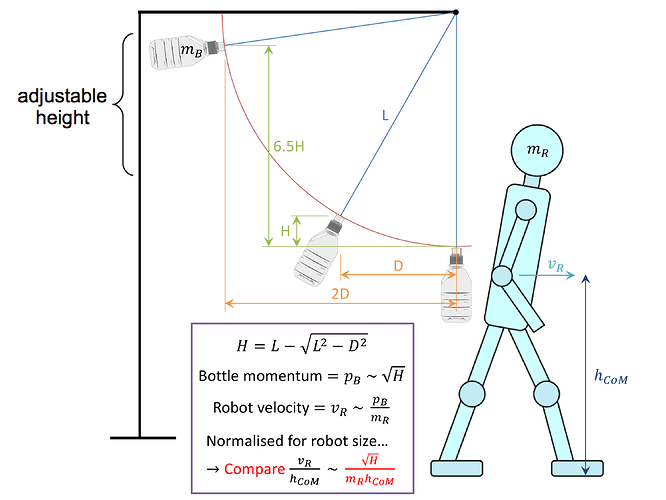In the summary of voting results, it was mentioned that some comments were briefly heard on the concerns of the push-recovery challenge. While it is still possible to change the rules we would like to strongly re-emphasize the case that was made, and justify that they should not just be brief comments.
Originally, the challenge was unfair for small robots, until at RoboCup 2016 it was decided that the distance D would be normalised by the robot’s mass. That was definitely a good decision, but now the challenge is just as well unfair for large robots. The ground projected distance D is plainly not a suitable metric for judging push resistance.
For large disparities in mass (e.g factor of 2), it is entirely feasible that a smaller robot delivers a push recovery test that a large robot cannot even hypothetically beat because D is limited to L, while at the same time the smaller robot only has to absorb 1/7th of the energy. This is a systematic problem, not just in extreme cases.
Please refer to the following diagram (for the most part to scale) which illustrates the problem:
We think that the robots should be ranked by the amount of momentum they were able to absorb, normalised by their mass and CoM height. This makes a lot of sense, and is also illustrated in the above diagram.
Please refer to the original thread for more details and justification:
